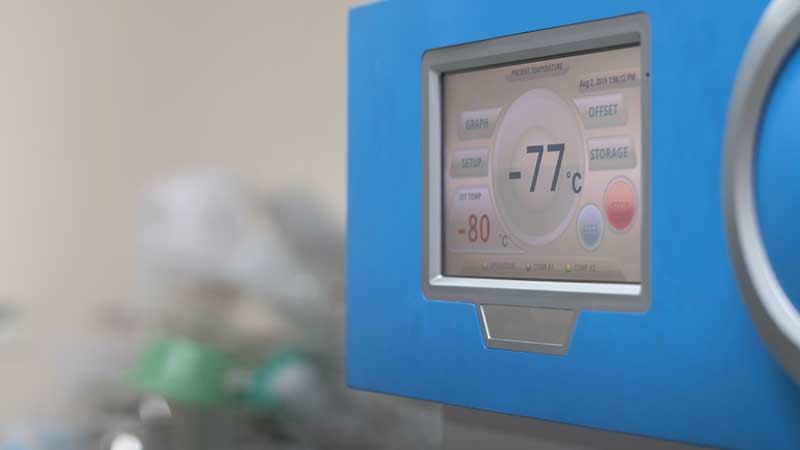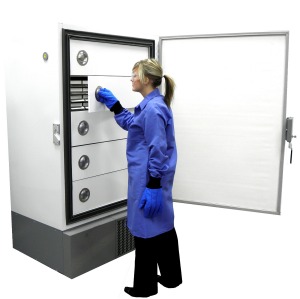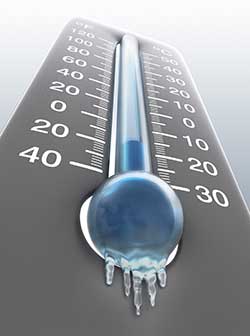
When and How to Specify an Ultra-Low Freezer
At this posting Phase 3 clinical trials are underway for COVID-19 vaccines, some of which call for an ultra-low freezer for storage and transport. Examples described in a September Wall Street Journal article notes the unusually cold storage temperatures – as low as -80⁰C – required. Covid-19 vaccine candidates are one of many applications for ultra-low freezers. This post provides you with info on when and how to specify one of these units.
Unlike “ordinary” freezers, ultra-low freezers are not inexpensive. The investment is important when the job is to protect contents of high value and sometimes for long periods of time. More on this below.
Fortunately there are a number of ultra-low freezers on the market to ease the selection of a model that best suits your needs.
What is Meant by Ultra-Low Freezers?
Good question.
There are freezers, low-temperature freezers and ultra-low freezers on the market.
Here are some examples that apply to scientific (not commercial or household) freezers. Note that different manufacturers may define the temperature capabilities of their various models differently.
- Scientific laboratory and pharmacy freezers can control ranges from -10⁰ to -25⁰C (+14⁰ to -13⁰F)
- Low temperature freezers depending on the model and function: to – 25⁰, -35⁰ or -40⁰C (-13⁰, -31⁰, -40⁰F) minimum, also with a user-controlled range
- Ultra-lowfreezers control temperatures down to -86⁰C (-186.5⁰F) also with precise temperature control
But:
Colder is Not Always Better
Base your decision on the recommended storage temperature for what you put in your freezer. Our next section provides some examples. Just as with your room or central air conditioner, a colder setting means a higher power consumption.
Keep in mind as well that when you access the unit you allow ambient-temperature air to enter. We’ll get into that later.
Typical Applications for Ultra-Low Freezers
Ultra-low freezers find wide application for biological and biotech storage applications in
- most recently – potential Covid-19 vaccine storage
- research universities
- medical centers and hospitals
- blood banks
- forensic labs for long-term evidence storage
- establishing performance specs for parts used in extreme environments
In addition to Covid-19 vaccine candidates, other examples require ultra-low freezers to store biological samples such as DNA/RNA, plant samples and insect artifacts, autopsy materials, blood, plasma and tissues, chemicals, drugs and antibiotics.
Manufacturing firms and performance testing labs use ultra-low freezers to determine the ability of products and machinery to perform reliably under severe low temperature conditions such as found in Arctic and Antarctic regions.
A Very Important Note
These myriad applications suggest that ultra-low freezers may house multiple and different experiments, some of which may require frequent checking while others remain undisturbed for lengthy periods of time.
And in fact if they do, this becomes a feature that can be applied to your selection process.
What to Look for in an Ultra-Low Freezer
Here we’ll cover some of the more important things to keep in mind when you go shopping for an ultra-low freezer (also identified as ULT freezers).
- Temperature Control
As suggested above, the lower you set the thermostat on a ULT freezer (or any freezer for that matter) the more energy it consumes to maintain that temperature. So again, it is a smart idea to match the temperature capability to storage or environmental testing recommendations.
The key is a precisely adjustable thermostat.
For example, Norlake Ultra-Low upright and chest freezers offered by Tovatech allow temperatures to be adjusted and displayed in 0.1⁰C increments while on-board systems and maintenance diagnostics ensure optimal freezer performance.
You’ll decide how important such a degree (no pun intended) of temperature control is to your requirements. But we suggest you look for models that display your set and actual internal temperature. This can alert you to a potential malfunction in the unit. - Temperature Excursion Alarming
High efficiency insulation plus cabinet- and door-mounted gaskets contribute to energy-efficient performance. But things can go wrong in which case an alarming system should provide an immediate alert, and it should be functional in a power outage.
Look for a battery-operated system with an audio and visual alert (and optional remote alerts) that activate if the temperature increases above the set value. Personnel should be able to test the alarm system. A low-battery indicator is a useful feature. - Utra-Low Freezer Record Keeping
Accurate record keeping when storing valuable and/or temperature-sensitive products is critical. It is one of the key requirements in the CDC’s 2020 Vaccine Storage and Handling Toolkit. - Isolating Specimens
When you open a freezer door you provide access for ambient temperature air.
This makes it advisable to select an ultra-low freezer with separate internal compartments. Equipment available from Tovatech, for example, has not only a main door but also interior compartments with individual insulated magnetic catch doors. This confines the intrusion of ambient air to the accessed compartment.
Compartments can be fitted with optional individual specimen racks to hold separate containers that in turn can accommodate cell dividers. Labeling compartment doors, specimen racks and individual containers speed content removal and return, further enhancing operating efficiency.
Selecting your Ultra-Low Freezer Size
How much storage capacity do you really need? All freezers operate more efficiently when they are full. This is because the contents help stabilize holding temperatures.
The criteria for size should also take into account space available (i.e. footprint). Tovatech scientists can help you make a selection. In brief, however, interior volumes can range from 13 to 30 cubic feet for upright models and 2 to 27 cubic feet for chest models.
Other Ultra-Low Freezer Specification Considerations
As an example, the Nor-Lake Scientific Select ultra low freezer design was beta-tested in a large clinical lab where scientists and technicians commented on several noteworthy features. If your organization is considering a ULT freezer you’ll probably be comparing the offerings of several manufacturers, and may be interested in what the Norlake beta test revealed:
- Sturdy construction, specifically door handles/latches that will stand up to years of rugged use.
- The fastest temperature recovery after door opening of any freezer in the lab. This reduces incidents of triggering the alarm during daily use.
- Front-mounted eye-level control system displays real time clock, event logging, alarm history, advanced alarms, alarm test and memory functions.
- An interior design that readily accepts rack systems and storage containers from other models.
These and other features are among the reasons why this lab decided to move everyday samples to the Norlake ultra-low freezer design, using their older units for non-routine sample storage.
Other useful features include:
- On-board system and maintenance diagnostics to reduce guesswork.
- Multi-bulb gaskets on doors and cabinets for superior temperature stability.
- Separate internal storage compartments (5) with insulated doors and internal adjustable shelving to minimize content exposure to ambient air.
- 4-inch thick CFC-free foam insulation contributes to structural strength vs. vacuum panels that can leak and can suffer damage during transport and/or repositioning.
- High ratio of internal space to external dimensions.
- Useful options including temperature chart recorders, phone dialers, LN2 and CO2 backup.
To Wrap Things Up on Specifying Ultra Low Freezers
An ultra-low temperature scientific freezer represents a substantial investment. Arm yourself with facts about your particular application then contact the freezer professionals at Tovatech or call us for advice on selecting an ULT freezer that best meets your requirements.


